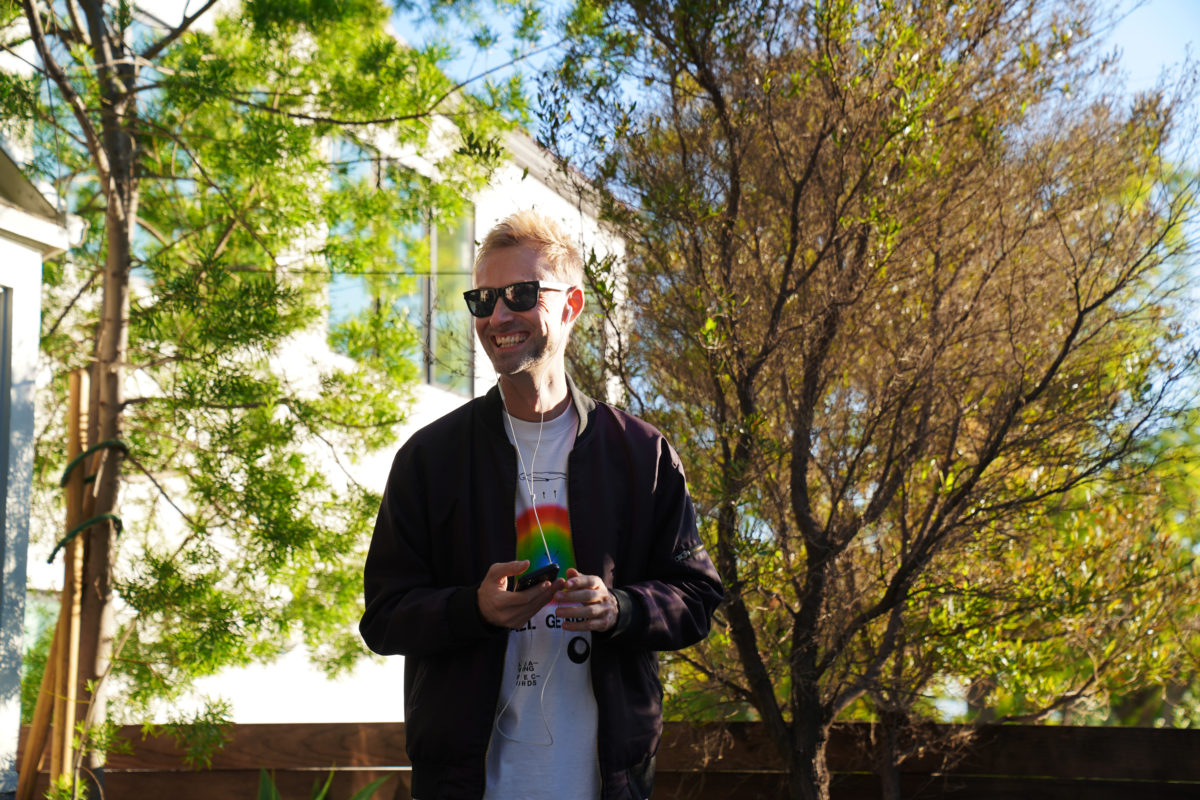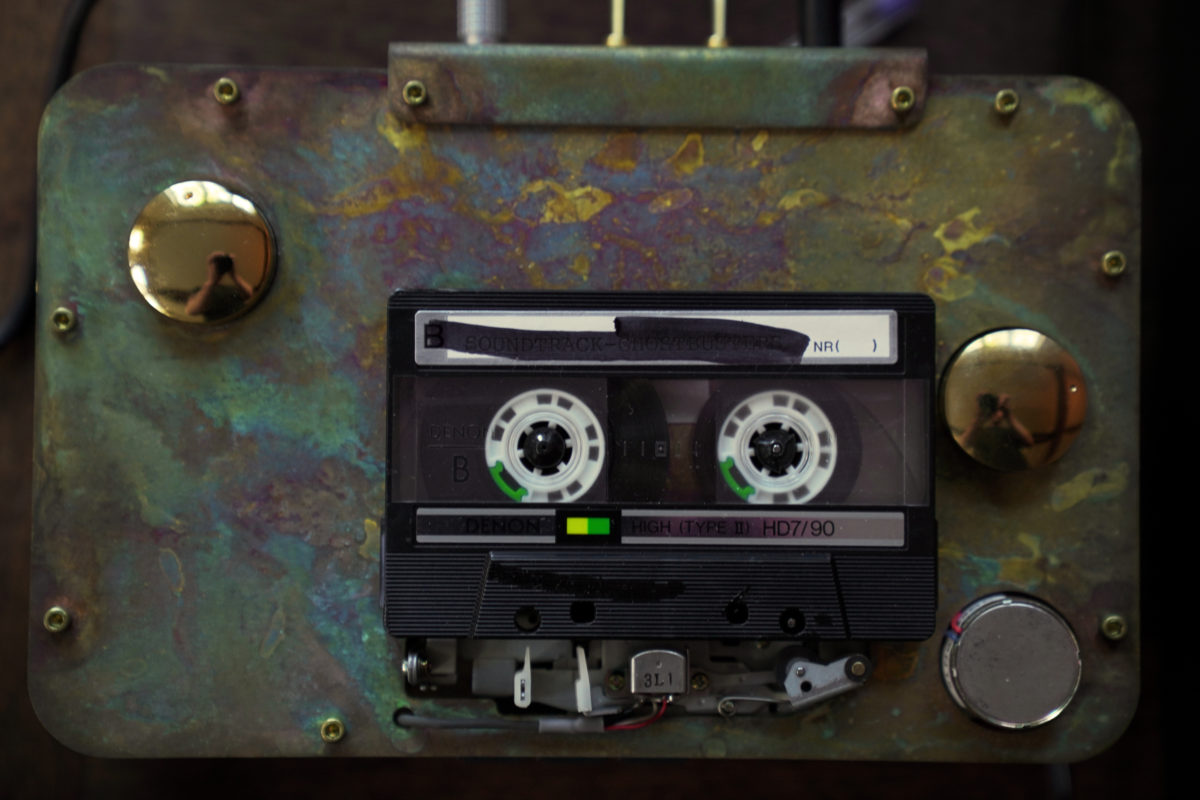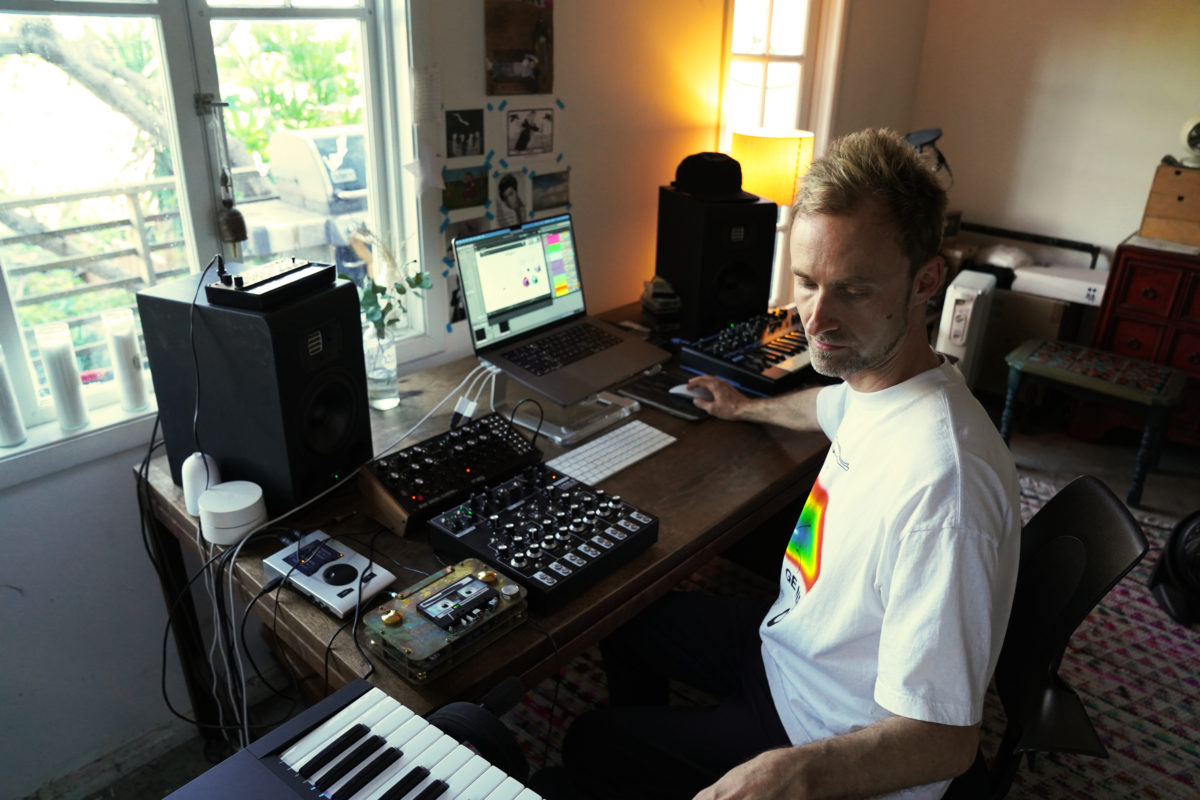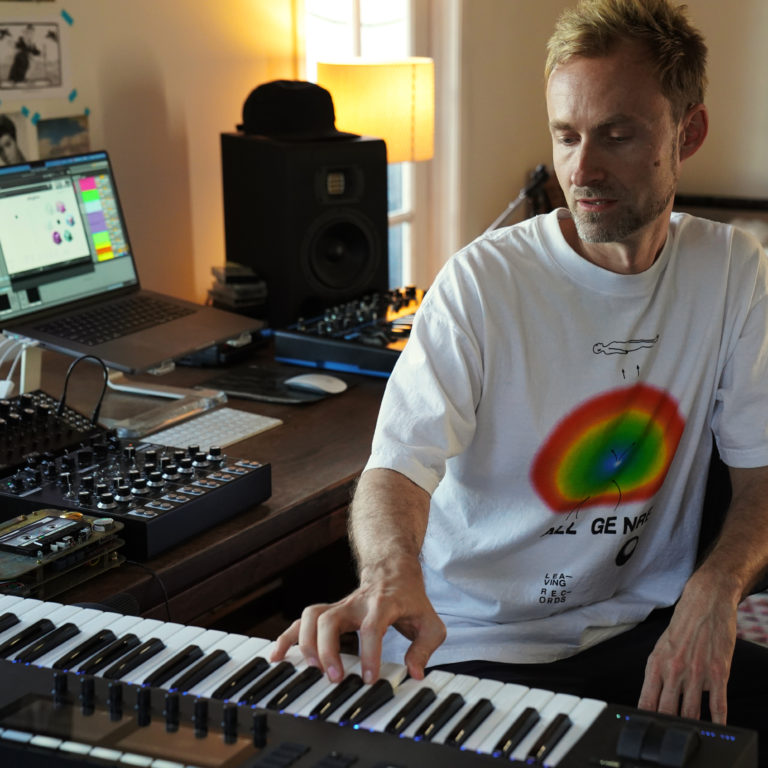Robert Koch has been making music for over 20 years, from his solo work as Robot Koch and Foam & Sand to his productions for other artists like Oliver Tree and Marteria & Casper and composing soundtracks to Netflix shows, films and videogames. But even a seasoned producer can get writer’s block, and it hit Robert hard last year. “I had just finished working on a TV show and it was very taxing writing a lot of music in a very short amount of time. I just wanted to start writing new original material and I just felt like I hit a wall creatively.” Around that time, his longtime friend Nadine Raihani, Native Instruments’ Head of UX and Market Research, reached out about a new VST that she and the team were designing (originally called Playground).
The instrument – known as Playbox – became an essential tool for Robert, helping him generate new ideas and also add the finishing spice to tracks. You can hear heaps of Playbox’s multi-layered chords and unique textures all over his new Alchemy EP, produced in collaboration with Snakes of Russia. Robert also fed a lot of his own sounds – tape manipulations, analog synths, field recordings – into Playbox and mixed them with its internal sonics, interacting with the program almost like you would a human collaborator.
We recently turned up at Robert’s sun-filled California studio (he moved from Berlin to Los Angeles in 2013) to take a closer look at his production process – watch the video below to find out about the unique ways that he uses Playbox and read on after the video to find out more about his music-making philosophies and creative workflows.
“I just like to bring up the textures and the hidden spaces between sounds,” says Koch. “That’s something that fascinates me. I think space and texture are the things that are significant to my sound. I record a lot of stuff on tape – I like to resample things, compress things, so I get the wobbliness and the beauty of the unsteadiness. Sometimes when I slow down the tape, it just gives me these artifacts because of the nature of the tape – the magnetic creature that it is – it gives me a lot of happy accidents that don’t often happen for me in the computer.”
While many plug-ins and sample libraries have their parameters and presets pretty locked in, Playbox appealed to Robert because it creates happy accidents, which often sparked new ideas. Randomization is built into Playbox in many different ways – hit the dice icon that appears throughout the instrument and you can randomize the samples that make up a chord or a chord set, randomize effects or tell the system to mix your own samples or chords with preset sounds in literally thousands of ways.
“I have like a time-tested and approved way of how I layer things, and Playbox just does it in a different way,” explains Robert. “That’s what I love about it – you load your own sounds in and it kind of mirrors them back to you in a way that you didn’t imagine before. So it’s like a collaborator saying, ‘Hey, what do you think about this?’ And I was like, ‘Oh, that’s actually a good idea!’ I could have a whole talk about randomization because to me it’s very natural. It’s evolution, you know? Like, a mutation happens through random accidents and that’s what propels evolution. What’s true in nature is true in music.”
“On the Alchemy EP, I mixed a lot of the sounds that Playbox comes with – which are really great, by the way – with a bunch of stuff which I recorded.The most fun bit is mixing and matching. Maybe you like one of the bass sounds that it came with but then you stack it with your own grainy tape texture or whatever.” Not only can you drag and drop sounds and actual entire chords from your own projects into Playbox – and those sounds automatically are processed to fit into the key of your song – but you can also lock the key of whatever you’re randomizing.”
“For example, if you only want to hear things in A minor or C major, you have that option with a quick selection from a drop-down menu. Lock everything you want to keep, roll the dice to randomize the rest. “Playbox seems very free in a way,” explains Robert. “You can just poke around and find things but you can also dial it in. That’s what I love about it. It’s intuitive and random, seemingly, but also everything can be dialed in, so it’s actually very specific and exact.”

“When I write music, either I’m coming to a new project – so it’s like wide open, and I’m just improvising and looking for ideas – or I’m further down the line in the track and I just want to add another layer or texture to it. You know, when you’re like at 80% of the track, and you kind of want to push it to 100%? Everything is mapped out, you know what the chords are, how your arrangement looks, but there’s maybe section where you need to double the chords with a different sound… That’s when it’s great to just import your chords that you’re working with and try them out with different type of sounds. It’s more than just applying a VST to it, because it’s not just a synth playing these chords; it’s literally all these different element – that could be noise, voices, bass, synths – that all of a sudden reimagine your chord and that’s kind of exciting.”
“In terms of samples within Playbox, I really like all these great field recording-type sounds and this broken glass too. Those are of cool to layer with bass; they give it something in the high frequencies and it’s kind of like ASMR almost. Essentially, it adds more depth to the sound. What I also found interesting was the effects unit, which has some great granular options and the distortion sounds really nice and kind of epic – especially if you’re working on some trailer-type stuff, which has some kind of larger-than-life quality to it. That’s something I like to mix with more delicate sounds because intensity is something I enjoy a lot in music – emotional intensity but also the literal intensity of a sound being distorted or mangled in some fashion.”“Some of the FX parameters of different sounds are mapped to the X-Y axis pad – if you go to the Effects tab you can actually see them moving around, like the grain mover, the particles, etcetera. You can obviously assign those to your keyboard knobs or whatever controller you’re using and just be hands on with all these different parameters. But you also don’t need to understand what it actually does to experience it – you can just play with it. Also, if you hold a note down longer you will get a different sound again – sometimes the samples in the chords are staggered and not all hitting at the same time.”

“Some of the FX parameters of different sounds are mapped to the X-Y axis pad – if you go to the Effects tab you can actually see them moving around, like the grain mover, the particles, etcetera. You can obviously assign those to your keyboard knobs or whatever controller you’re using and just be hands on with all these different parameters. But you also don’t need to understand what it actually does to experience it – you can just play with it. Also, if you hold a note down longer you will get a different sound again – sometimes the samples in the chords are staggered and not all hitting at the same time.”
“What I actually do, once I’ve found something I like is I print it to audio. I like to work in audio more than I like MIDI. Maybe I like everything about this part I’ve resampled except it’s a little too bright. With audio, I can isolate the problem part and put it on a different track with a whole different effects chain just assigned to this particular piece of the sound. With audio I could also pitch it down an octabe, slice it up, isolate bits, reverse them, put them on separate channels, and then I can do even more sound processing on that. You can also have different takes, like a clean take and then a different one with a more saturated, heavier kind of distortion on it.”

As Robert plays us through the sounds he’s created, it’s easy to see how this crunchy, multi-layered mix of organic and digital textures is a true hallmark of his sound. He concurs, but says there are even deeper and headier concepts behind his work. “I’m just searching for the unknown. Often times, starting a new track is a blank canvas, which is sort of terrifying because you don’t know what’s going to happen. But at the same time, it’s the most exciting part of the creative process to me. For me, facing the unknown is a hugely inspiring thing. I’m also fascinated by sci-fi and quantum physics and space in general. I’m looking for space in sound.”
“I have this whole idea about micro and macro – everything being as above, so below. And that’s what I kind of try to express in my music, you know? This whole concept of our body being a microcosm that’s sort of mirrored in the in the bigger picture by the macrocosm, which is the universe. You can zoom in to any cell and find similarities from the bigger picture towards the smaller one. And that’s why I like zooming into let’s say the tape, finding these artifacts, and then zooming back out to the big picture, which is the arrangement or the whole song. That is again encompassed in a bigger idea, which might be the album. You can just zoom in and out all the time. Everything is latent in the field as a potential until you tap into it and realize it – you know, like when you turn a wave into matter. That’s what the creative process is to me. I’m just open at the beginning and then I’m poking around and something just grabs my attention or inspires me, and this is when I materialize it, record it, and there it is.”
















